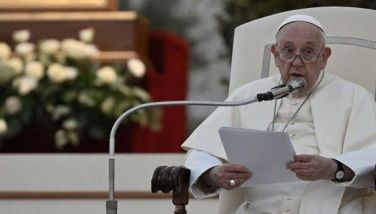ECB's Draghi: Risks from emerging markets have increased
FRANKFURT - European Central Bank head Mario Draghi has warned that the "downside risks" facing Europe's economy have increased due to the recent turmoil in emerging markets.
Draghi's remark yesterday to the European Parliament in Strasbourg, France, comes as the bank is preparing to consider adding to its stimulus efforts at its next meeting on March 10.
He repeated his earlier stance that the bank has found risks high enough "to review and possibly reconsider" the level of its stimulus efforts. Markets have taken that as all but promising some kind of action at March meeting.
He said risks in emerging markets "have increased again amid heightened uncertainty" since Dec. 3, when the bank decided to cut a key interest rate and extend its bond-purchase stimulus program by six months.
Financial markets have been volatile this year over concerns about the slowdown in China, a key trading partner for Europe and one of the engines of the global economy. Additionally, low oil prices are hurting growth prospects in producing countries.
Others face investor flight after the US Federal Reserve raised interest rates in December for the first time in nearly ten years. The prospect of further rate hikes in the US continues to attract cash there and has been one of the main reasons behind the dollar's advance over the past few months.
Draghi said some emerging-market economies "remain vulnerable to an abrupt shift in risk sentiment" that could lead to tighter credit conditions and deal a further setback to global growth.
He added that inflation shows signs of weakening since the ECB met last — a key factor in deciding on stimulus, since the ECB is falling well short of its goal of an inflation rate of just under 2 percent. In the year to January, inflation stood at 0.4 percent.
"Inflation dynamics are also tangibly weaker than we expected in December," Draghi said.
Analysts think the bank's 25-member governing council could add to its 60 billion euros ($65 billion) in monthly bond purchases through March 2017, a step which pumps newly printed money into the economy.
It could also cut the rate on the deposits it takes from commercial banks from its current rate of minus 0.3 percent. The negative rate is aimed at pushing banks to lend money rather than hoarding it.
- Latest
- Trending






























